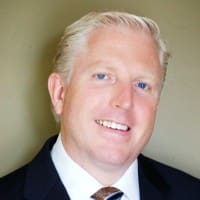 CVS Health: A Culture of Innovation Before and After the Hire
CVS Health: A Culture of Innovation Before and After the Hire
Jeffrey Lackey, Vice President of Talent Acquisition, CVS Health
Jeff shared how a culture of innovation played a crucial role in the overwhelming success of CVS Health’s National Hiring Day.
- Innovation doesn’t always come in the form of a big, earth-shattering idea. Often, it’s the aggregate of lots of small innovations that has a tremendous impact.
- It’s important to create a culture in which it’s OK to experiment – and fail. The key for those striving for excellence is to learn something from every initiative. For example, after a stunning performance, a musician will think about that one note that they played off-key. The audience will not have noticed, but the musician will obsess about that note at the next practice.
- In what has been called the most challenging market for hourly employees, Jeff and his team were tasked with executing a national hiring day – with 28 days’ notice. Most would say, “That’s impossible!” However, because it was their idea, Jeff’s team hit the ground running and mobilized 10,000 stores in that short period of time. In fact, the whole organization got behind the concept. Because of the culture of innovation underpinning all efforts, the National Hiring Day and follow up efforts brought in 36,000 employees.
- Finally, there are two simple yet crucial Ingredients that function as tentpoles for a culture of innovation: Listening (If you ask your employees for ideas, they will tell you!); and Appreciation (Consistently demonstrating appreciation for the work – not the outcome – emphasizes that employees should not be afraid to fail.)
 The Future of the Office
The Future of the Office
Dr. Peter Cappelli
Director
Wharton Center for HR
- There is conflicting data about the current state of the employment market. A survey by a real estate company of their clients (people managing offices) found that most employers are making plans to redo their offices post-covid — 20% are planning to get rid of private offices altogether. However, another survey of similar companies found that about one third of office workers are back in the office.
- Data also shows that while executives think everybody should be back in the office, 2/3 of those executives weren’t consulting employees when making that decision. Alternatively, employees thought they should still be working at home.
- Overall, it’s hard to say where employers stand on this issue now, as they haven’t taken a firm stance, and decisions keep getting pushed back.
- From the employee standpoint, 52% want a more flexible working model post-pandemic. While the percentage who want to be permanently remote has remained small, which is surprising, most want to have a hybrid set up.
- In the remote environment, employees perceive that they like their manager better, are learning more, and are more energized. The question is, do they like their boss better because they are not seeing them, or is their boss doing something different?
- If employees think things are going better, and employers think things are going OK, then why not keep things the same? Employers need a counter to that question, and it must demonstrate how things weren’t quite as great or that something was missing that we need. If employers aren’t prepared to have that discussion, it will irritate employees in big way.
Here are some issues for the employee:
- Initially, working from home was good because companies had government money, employers gave employees autonomy and trust, and everyone pulled together. Will these rewards last?
- Remote work can cause careers to stall (who’s going to get ahead, those at home or those in the office with face time with the boss?) and make employees feel less engaged (people get attached to people, not a company brand). So, do employees really want it?
- New hires don’t know any different and want to experience a more “standard” environment. How does an employer prevent skyrocketing turnover rates?
What about the employer?
- Positives include budget savings. One month into the pandemic, 34% of CFOs wanted to cut their real estate footprint. There’s also the possibility of reducing salaries for employees who want to relocate.
- A hybrid environment demands different management styles for those in the office and those at home. It offers more flexibility for employees but doesn’t save on office space and can create scheduling issues.
- Remote work could reduce sick days. When employees feel well enough to work but do not want to come to the office and spread their sickness, they can stay at home and the balance sheet benefits from not recording a sick day.
Negatives of remote work: mostly only independent tasks are successful; collaboration and agile project management are difficult; there’s less engagement; teams experience more conflict.
CHRO Perspective: Hybrid and Remote Workplace Rights, Global Talent Shortages, and More
Steve Antonoff, Vice President, Human Resources, CalPortand; Aida Rosa, CHRO, San Diego Zoo Wildlife Alliance; Deborah Thomas, CHRO, Somos; and Elliot Clark, CEO, SharedXpertise Media (moderator)
Moderator Elliot Clark described each panelist’ company to provide context for the discussion:
- CalPortland (Steve Antonoff): World-leading provider of construction materials with a workforce that includes plants and a fleet of drivers
- San Diego Zoo Wildlife Alliance (Aida Rosa): A location-based zoo
- Somos (Deborah Thomas): A technology company that has always had a 100% remote workforce
Topic 1: Vaccine mandates: How are you coping with communication and compliance issues?
- Steve: We have a significant number of commercial drivers and mine-site operators who are potentially excluded from legal mandates. Of 2700 employees, about 1200 are vaccinated. We have mailed letters to the homes of unvaccinated employees with a reminder about our gift card incentive. We do not believe in mandates by the company but follow all legal requirements/government mandates. Also, we are in California, which creates its own rules. For example, we deliver ready-mix concrete. If a school district says contractors must be vaccinated, we now must monitor the drivers who deliver to that school to make sure they are vaccinated. We do whatever is necessary to ease the pain for employees (e.g., time off to get vaccine). We continuously communicate with all employees, and all messages come from the CEO, not the HR department.
- Aida: Consistent communication is important. About 800 employees, or 30% of the workforce, is not vaccinated. We’ve gone back and forth on the mask mandates; right now, we require masks when indoors and sometimes when outdoors. We strongly recommend that employees to get vaccinated and have offered Zoom education sessions with physicians that had pretty good attendance. We also held vaccination clinics on site, but attendance for those was not very high. We are on standby – we don’t want to make our own mandates, but we will follow al government mandates.
Topic 2: Workforce and Talent Shortage
- Deborah: [How are you dealing with not only the shortage, but the stress it puts on your current workforce?] Our turnover has not increased significantly year over year. The leadership team has established such an amazing culture – what we call the “secret sauce.” We continue to leverage culture and collaboration with existing employees. The challenge is with recruiting new talent. We lead with our point of differentiation – our culture. We also use assessments to boost retention. And, we are very high touch throughout the selection process, so everyone understands what they’re signing up for.
- Steve: [How is it affecting CDL drivers?] Wages for CDL drivers are rising faster than those for software developers. Shortages have been around for a few years. There are 750,000 too few drivers to fill short- and long-haul positions. There’s been a slight increase in turnover, which is naturally high anyway. We are starting to do more training ourselves rather than hiring trained drivers or using another facility to train them. We used to require that background screening and drug screening be done before putting employees on payroll. Now we put them on payroll right away. We are changing our thinking around what needs to be done to fill driver seats. Requirements are also changing: the government used to not allow CDL drivers under 21 to cross state lines. So, we didn’t higher drivers under 21. Now, we can hire 18- and 19-year-olds and work with those offboarding from military.
Topic 3: Remote Work
- Aida: [You have remote and location-based workers, as well as full- and part-time, and volunteers: how do you balance the approaches to these different constituencies?] Eighty percent of our workforce is guest facing, and they’ve come back, as they understand that’s the job they applied for. We implemented a hybrid model which includes the option to work from home two days a week. Many are coming in for the full week. Others want more days to work from home, some want to work from home 100%. We are trying to create a culture of people being present and together, and it has been challenging. Sometimes there’s a comment about office workers having it “better.” Volunteers who are so passionate – they couldn’t wait to come back!
- Deborah: [How do you manage culture and engagement for a remote workforce?] Our culture has always had a high dependence on collaboration and community. We recognized that with a 100% virtual environment, we can’t just assume the work processes of other companies. We must look at each process and make sure it works for us. For onboarding, we send a box of the employee’s favorite candy. When we hold cooking classes, we invite employees’ families to participate. It’s all about community. We do a lot of celebrating.
In five years, I need to make sure my organization is ready to cope with….
- Aida: We have an average tenure of 20 years, which is starting to decline. I worry about loyalty and retention.
- Deborah: We will need to expand the types of relationships we are willing to embark upon with our employees.
- Steve: There aren’t as many people going into the trades and making a career out of these professions.



